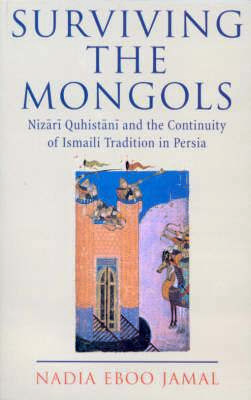During the 13th century CE, the Persian-speaking lands, extending from Central Asia to Iraq were devastated by a series of Mongol invasions. The massive movement of these nomadic warriors from the inner steppes of Asia resulted in the massacre and displacement of many communities, including the Ismaili Muslims of the region. The fall of the chief Ismaili fortress of Alamūt in 1256, followed by the destruction of some two hundred other strongholds, brought to an end the territorial independence of the IsmailisAdherents of a branch of Shi’i Islam that considers Ismail, the eldest son of the Shi’i Imam Jaʿfar al-Ṣādiq (d. 765), as his successor. in Persia.
Contrary to belief that the community was virtually eliminated, a small number of Persian Ismailis survived the Mongol onslaught, together with the basic infrastructure of their religious organisation, the daʿwaLit. ‘summons’, ‘mission’ or invitation to Islam. Amongst Shi’i Muslims, it was the invitation to adopt the cause of the Imamat. It also refers more specifically to the hierarchy of…. After presenting an overview of the development of the Ismaili daʿwa in the historical context, the author explores how this organisation was instrumental in enabling the Persian Ismailis to maintain their religious identity and the cohesion of their community in those difficult times.
Among the various authorities consulted by the author for this study, the most important is the poet Saʿd al-Dīn b. Shams al-Dīn, generally known as Nizāri Quhistānī. Through an analysis of his works, in particular the Safar-nāma (Travelogue) which describes the poet’s journey from Quhistān to Transcaucasia around 1280, the author is able for the first time to demonstrate the existence of the Ismaili daʿwa and thus the continuity of Ismaili tradition in Persia through the era of Mongol rule.
Foreword by Farhad Daftary
Preface
1 Introduction
Part One: The Ismaili Daʿwa: Community, History and Destiny
2. The Early Ismaili and Fatimid Daʿwas
3. The Nizārī Ismaili Daʿwa
4. The Mongol Catastrophe
Part Two: Nizārī Quhistānī: The Search for Meaning and Identity
5. The Poet Nizārī Quhistānī
6. Ismailism, Sufism and Nizārī Quhistānī
7. Nizārī’s Safar-nāma: The Journey of a Dāʿī
Notes
Bibliography
Index
‘…sheds a welcome light on the Il-Khanate in general, and the Persian Ismailis and Nizari Quhistani (1247–1320) in particular.’
– George Lane, Bulletin of the School of Oriental and African Studies
Nadia Eboo Jamal received her Ph.D. degree in Near Eastern Languages and Literature from New York University in 1996. A specialist in Persian history and culture in the period of Mongol rule, with particular emphasis on the Ismailis, she is an independent scholar based in Switzerland.

